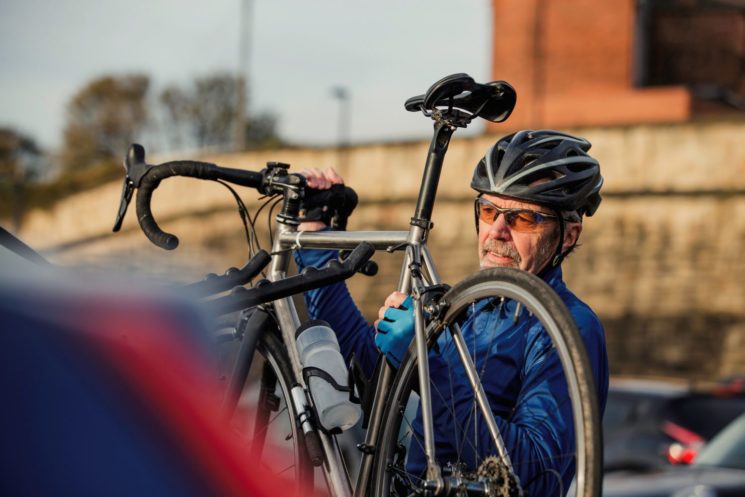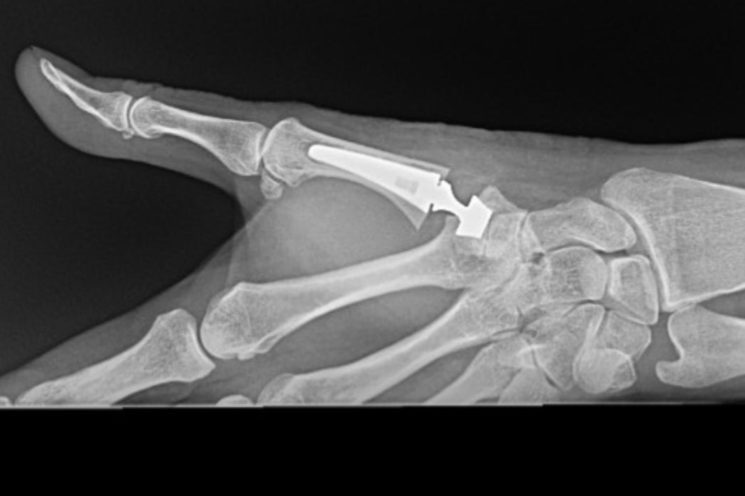
Whether you’re a casual rider or a seasoned professional, cycling can be an excellent way to keep fit and healthy, as well as being a convenient mode of transport. Not only can cycling improve muscle tone, but it also has many benefits for your cardiovascular health.
However, like any sport, cycling comes with its risks. While the occasional collision can occur, most cycling injuries happen because of simple and easily remedied reasons, such as incorrect posture or a poorly fitted bicycle. Find out more about the most common cycling injuries and the best ways to avoid them in our blog.
Cycling fractures and sprains
If you fall from your bike, you might find yourself with some minor cuts and grazes – but also potentially a fracture. Common locations for bones fractured through cycling include the arm, elbow, wrist and collarbone.
The collarbone (clavicle) is particularly susceptible to fracturing due to the way in which most cyclists come off their bike. Most will fall sideways onto their shoulder or outstretched arm, which causes the S-shaped collarbone to compress and fracture under the sudden pressure.
If you fracture your collarbone, you may experience pain, bruising and/or swelling, a deformity at the injured site, a sagging appearance to the shoulder, and difficulty in moving your arm. You may also have heard a snapping or popping noise at the time of injury.
Treatment for a fractured collarbone usually involves either a sling or surgery. In many cases, you will simply be advised to wear a sling and allow the fracture to heal naturally over a period of four to six weeks.
If you have a more complicated injury, like a displaced collarbone, you may require surgery. Collarbone surgery involves using a metal plate and screws to realign the displaced bone.
Other common fractures include the hand, wrist, or elbow as you instinctively try to protect yourself as you fall, or rib fractures if you fall on your side.
Patellofemoral pain syndrome (PFPS)
If the front of your knee feels tender, then patellofemoral pain syndrome (PFPS) may be the culprit. PFPS is a knee condition commonly found in cyclists and runners where pain is experienced at the front of the knee, around the patellofemoral joint.
The patellofemoral joint is a structure consisting of bone, tendon and ligaments that joins the kneecap (patella) with the thigh bone (femur) and shin bone (tibia). When the knee is bent and straightened, the kneecap follows an S-shaped path along two projections at the end of the thigh bone, called the femoral condyle. Depending on the angle of knee bend, different parts of the kneecap can be exposed to various stresses. These stresses may build up in certain areas of the kneecap that aren’t designed to withstand them, which leads to pain in the front of the knee.
If you’re experiencing knee pain after cycling, it may be a result of overuse, overexertion, or a sudden change in the amount of activity you’re doing. You might experience pain at the front of the knee, around or underneath the kneecap, and this pain may worsen with movements such as climbing the stairs or after prolonged sitting.
PFPS can usually be managed by adjusting your activity levels and ensuring your bike is of a good fit, especially seat height. If the pain persists you may require further treatment, such as physiotherapy, sports massage, PRP therapy, or steroid injections.
Bursitis
Bursae are small, fluid-filled sacs that cushion the bones, tendons and muscles around your joints. When these sacs become inflamed, it is known as bursitis.
The most common bursae to become inflamed are those found in the shoulder, elbow, knee and hip. Cyclists may be more prone to bursitis in the knee and hip due to increased strain on these areas of the body. Symptoms of bursitis include pain, swelling and a reduced range of motion.
If you’re diagnosed with bursitis, it is recommended that you:
- rest and reduce high-impact activities
- ice the affected area to reduce inflammation
- use compression bandages
- elevate the affected area
- take anti-inflammatory medication
If your condition is severe, your consultant may need to drain the inflamed bursae. They may also recommend you have a steroid injection to reduce swelling and inflammation.
Iliotibial band syndrome (ITBS)
Iliotibial band syndrome is a common condition which presents as pain around the outside of the knee.
The iliotibial band is a strong, thick band of tissue which runs down the outer length of the thigh, from hip to the top of the shinbone. ITBS occurs when the iliotibial band rubs repeatedly against the lower end of the thighbone as it joins the knee, such as with repeated bending and straightening of the knee during cycling. When this movement occurs for prolonged periods, the iliotibial band tissue becomes irritated and you experience pain on the outside of the knee. Occasionally this pain may spread up the leg, towards the hip.
Similarly to other inflammatory conditions, ITBS can be treated with a combination of complete rest, icing of the affected site, use of anti-inflammatories, and physiotherapy.
How to prevent cycling injuries
Most cycling injuries can be easily prevented – here are some of our top tips for staying safe when out and about on your bike.
- Ensure your bike is a good fit for your height and weight. Ask for help in choosing the correct bike for your needs at a specialist shop.
- Be aware of your posture. Keeping your back straight can help mitigate lower back pain, and this is why it is important that you have your bike fitted by a professional.
- Avoid shoes that are too tight. This is because too-tight shoes can lead to a common condition known as ‘hot foot’, where your feet feel like they are burning due to excess pressure.
- Check the position of your hands and wrists. If you grip the handlebars too tightly, or fail to keep your wrists straight while cycling, you may experience pain, numbness or tingling in the hands.
- Keep your elbows slightly flexed. This will help avoid shoulder pain, which can occur if you keep your arms too straight.
- Check your seat position. If your saddle is too high or too low, you could develop knee pain.
- Take it slowly. If you are new to cycling, then slowly build up over time to avoid overuse injuries.
- Hit the gym. Consider adding in sport specific weight training and stretches to complement your cycling and help prevent injuries.
- Be safe. This goes without saying, but ensure you wear a helmet, are visible to other road users, and remain alert!
Why choose us for orthopaedic care?
At Cromwell Hospital, we understand the importance of your health and well-being, especially when it comes to preventing and managing common cycling injuries.
- Expertise: Our dedicated team of healthcare professionals includes specialists in sports medicine and orthopaedics, ensuring you receive the highest level of care for your cycling-related injuries.
- Comprehensive care: We offer a wide range of diagnostic tests, treatment, and rehabilitation services, all under one roof, providing you with a seamless and efficient healthcare experience.
- Personalised approach: Your unique needs and goals are at the forefront of our treatment plans. We tailor our services to your specific injury and recovery requirements.
- Leading-edge technology: Cromwell Hospital is equipped with state-of-the-art facilities and technology, enabling accurate diagnosis and effective treatment for cycling injuries.
- Patient-centred experience: Our compassionate and caring staff are dedicated to your comfort and wellbeing throughout your journey to recovery.



